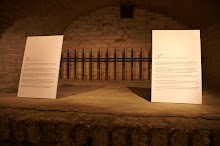You were fourteen, used to helping on the farm. Seeing a strange bird in the corn, you took the family gun and brought it down in a single shot. You were proud of that. How could you have known the blue-grey bird in your hands was the last wild passenger pigeon?
Your parents remembered the migrating flocks that took days to pass, blackening the skies, drowning out all sound in the thunder of wings. Such graceful birds; separating in a whirl of powerful wings round a predator, making a moving shadow rounds its talons. Safety in numbers was how they survived, how they lived.
Man was a different kind of predator; tracking them to their breeding grounds, culling them in their thousands, loading their carcasses onto the newly-opened railroads to the towns. When their numbers started to fall, conservationists called for limits, but legislators saw no need; it would be like protecting ants.
Seasons passed. The forests thinned. Settlers cleared the land. The weakened flocks somehow couldn’t reform. By the time the bill came in 1897 it was too late.
There were five billion passenger pigeons, they were the most common bird in America, possibly on the planet; and in less than a century you were killing the very last one.
skip to main |
skip to sidebar







According to the UNFPA the population of the world increases by 1.2% a year.
That's 235,000 a day.
That's 235,000 a day.
GENE MEME is a blog, art installation and outreach programme about world population.
The GENE MEME art installation took place in the Crypt Gallery in London from 9 June to 20 June 2010.
The GENE MEME art installation took place in the Crypt Gallery in London from 9 June to 20 June 2010.
GENE MEME was supported by a debate asking what should be done about rising population.



Links to posts
- Ancestral Pueblo culture
- Angkor
- Antioch
- Bodmin Moor
- Cahokia
- China’s Great Leap Forward
- Classical Greece
- Easter Island
- Ephesus
- Fatehpur Sikri
- GENE MEME
- Hawaii
- Hispaniola
- Holodomor
- Illinois
- Juana Maria
- Kaskaskia
- Madagascar
- Minimata
- North Korea’s ‘Arduous March’
- Pitcairn Island
- Rabbits in Australia
- Rwanda
- Smallpox
- St Kilda
- St Matthew Island
- Sugar
- The Aleuts
- The American Dustbowl
- The ancient Olmec civilisation
- The Aral Sea
- The burial of Riez
- The collapse of the Nasca
- The decline of Bruges
- The deforestation of Ethiopia
- The extinction of the Moa
- The Florida Everglades
- The Gambier trade triangle
- The great civilisation of Sumer
- The Harappan Culture
- The Irish potato famine
- the last Nicoleňo
- The last passenger pigeon
- The Mayan civilisation
- The pleistocene extinctions
- The Sahel
- The Vikings in Greenland
Search This Blog

